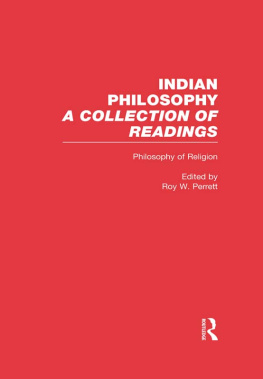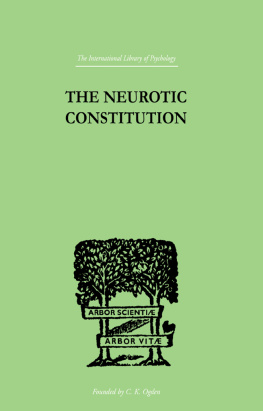Karel Werner - Symbols in Art and Religion: The Indian and the Comparative Perspectives
Here you can read online Karel Werner - Symbols in Art and Religion: The Indian and the Comparative Perspectives full text of the book (entire story) in english for free. Download pdf and epub, get meaning, cover and reviews about this ebook. year: 2013, publisher: Routledge, genre: Religion. Description of the work, (preface) as well as reviews are available. Best literature library LitArk.com created for fans of good reading and offers a wide selection of genres:
Romance novel
Science fiction
Adventure
Detective
Science
History
Home and family
Prose
Art
Politics
Computer
Non-fiction
Religion
Business
Children
Humor
Choose a favorite category and find really read worthwhile books. Enjoy immersion in the world of imagination, feel the emotions of the characters or learn something new for yourself, make an fascinating discovery.

- Book:Symbols in Art and Religion: The Indian and the Comparative Perspectives
- Author:
- Publisher:Routledge
- Genre:
- Year:2013
- Rating:5 / 5
- Favourites:Add to favourites
- Your mark:
- 100
- 1
- 2
- 3
- 4
- 5
Symbols in Art and Religion: The Indian and the Comparative Perspectives: summary, description and annotation
We offer to read an annotation, description, summary or preface (depends on what the author of the book "Symbols in Art and Religion: The Indian and the Comparative Perspectives" wrote himself). If you haven't found the necessary information about the book — write in the comments, we will try to find it.
Karel Werner: author's other books
Who wrote Symbols in Art and Religion: The Indian and the Comparative Perspectives? Find out the surname, the name of the author of the book and a list of all author's works by series.
Symbols in Art and Religion: The Indian and the Comparative Perspectives — read online for free the complete book (whole text) full work
Below is the text of the book, divided by pages. System saving the place of the last page read, allows you to conveniently read the book "Symbols in Art and Religion: The Indian and the Comparative Perspectives" online for free, without having to search again every time where you left off. Put a bookmark, and you can go to the page where you finished reading at any time.
Font size:
Interval:
Bookmark:

UNIVERSITY OF DURHAM
Edited by Karel Werner
Edited by Karel Werner
Karel Werner

Routledge
2 Park Square, Milton Park, Abingdon, Oxon OX14 4RN
by Routledge
711 Third Avenue, New York, NY 10017
Symbols in art and religion: the Indian and the
comparative perspectives. (Durham Indological
series, ISSN 0951-7863; V. 2).
1. Indian religious visual arts; Symbolism
I. Werner, Karel II. Series
704.94894
ISBN 0 7007 0215 6
The publisher has gone to great lengths to ensure the quality of this reprint but points out that some imperfections in the original may be apparent
- A Ariguttara Nikya
- AAr Aitareya rannyaka
- AB Aitareya Brhmaa
- AV Atharva Veda
- BhG Bhagavad Gt
- BP Bhgavata Pura
- BandP Brahma Pura
- BM British Museum
- BU Bhadrayaka Upaniad
- Bv Buddhavasa
- CJSR Canadian Journal of Studies in Religion
- CU Chndogya Upaniad
- D Dgha Nikya
- DA Dgha Nikya Atthakath
- Dhp Dhammapada
- DhpA Dhammapada Atthakath
- Dv Divyvadna
- ERE Hasting's Encyclopaedia of Religions and Ethics
- GP Garuda Pura
- HR History of Religions
- IE Indo-European
- IHQ Indian Historical Quarterly
- IIJ Indo-Iranian Journal
- J Jtaka
- JAOS Journal of the American Oriental Society
- JIABS Journal of the International Association of Buddhist Studies
- JOIB Journal of the Oriental Institute Baroda
- JRAS Journal of the Royal Asiatic Society
- JUB Jaiminya Upaniad Brhmaa
- LP Liga Pura
- M Majjhima Nikya
- MaiU Maitr Upaniad
- Mhb Mahbhrata
- MtsP Matsya Pura
- Miln Milindapaha
- MuU Muaka Upaniad
- Mv Mahvasa
- N Nidnakath
- PP Padma Pura
- Ps Patisabhidmagga
- PTS Pli Text Society
- R Religion (Journal of Religion and Religions)
- RV g Veda
- S Samyutta Nikya
- SB atapatha Brhmaa
- SBE Sacred Books of the East
- SCR Studies in Comparative Religion
- Sn Suttanipta
- SP Skanda Pura
- Thag Theragth
- TB Taittirya Brhmaa
- TS Taittirya Sahit
- VA Vibhaiga Atthakath
- V & A Victoria and Albert Museum
- VIN Vinaya Piaka
- VP Viu Pura
- VmP Vamana Pura
- VS Vjasaneyi Sahit
- VyP Vyu Pura
- YV Yajur Veda
- WZKM Wiener Zeitschrift fr die Kunde Des Morgenlandes
- ZDMG Zeitschrift der Deutschen Morgenlndischen Gesellschaft
Font size:
Interval:
Bookmark:
Similar books «Symbols in Art and Religion: The Indian and the Comparative Perspectives»
Look at similar books to Symbols in Art and Religion: The Indian and the Comparative Perspectives. We have selected literature similar in name and meaning in the hope of providing readers with more options to find new, interesting, not yet read works.
Discussion, reviews of the book Symbols in Art and Religion: The Indian and the Comparative Perspectives and just readers' own opinions. Leave your comments, write what you think about the work, its meaning or the main characters. Specify what exactly you liked and what you didn't like, and why you think so.



